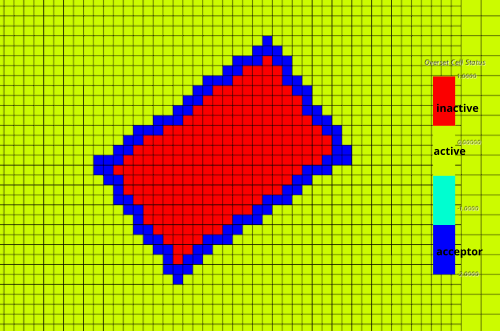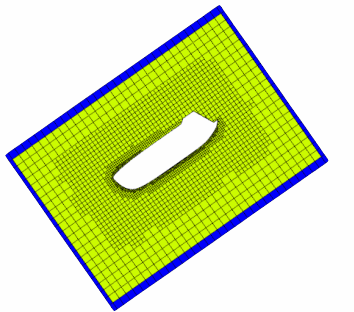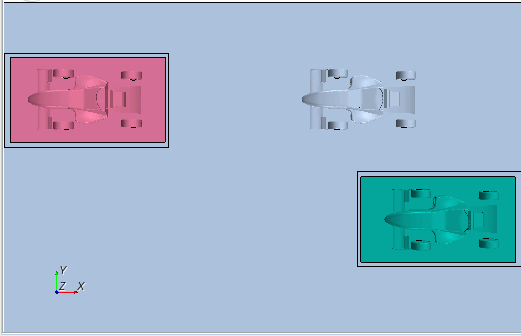Overset Meshes
Overset meshes are used to discretize a computational domain with several different meshes that overlap each other in an arbitrary manner. They are most useful in problems dealing with large motions as well as optimization studies where a geometry can be enclosed in an overset region and set to different positions.
Overview
The overset mesh approach couples regions through data exchange between acceptor cells of one region and donor cells (specially marked active cells) in another region.
A typical overset simulation has a background region enclosing the entire solution domain and one overset region that surrounds a body such as a boat hull or an airfoil. The outer surface of the overset region is defined as an overset boundary.
To couple these two regions, Simcenter STAR-CCM+ applies a hole-cutting process in which cells whose solution is obtained wholly from the overset region are marked as inactive in the background region. Within both the overset and background regions there are several layers of overlapping cells that participate in the data exchange procedure. See also Overset Hole Cutting.
The solution is computed for all active cells in all regions simultaneously, that is, the meshes are implicitly coupled. Within the discretized system of equations, when a reference is made to the variable value in an acceptor cell of one region, a blend of variable values at donor cells from another region is used to supply the value. This value is reflected directly in the coefficient matrix of the algebraic equation system. This tight coupling of the overset and background regions allows for a solution that is within an arbitrary low level of iteration errors. The rate of convergence of the iterative solution method is therefore similar to that of a single mesh of the same resolution.
Example
After the hole-cutting process is complete, the cell types of a lifeboat using Overset Mesh representation are shown below:
| The cell types in the background region: |
 |
| The cell types in the overset region: |
 |
| The final mesh combined from both regions : |
 |
Applications
Overset meshes are most applicable in the following cases:
- Parametric studies, such as when you orient identical bodies at different relative positions or immerse different bodies in the same environment. Fewer meshes are generated for these cases when using overset meshes.
- Complicated body motions, such as those involving bodies that are
close together, have intersecting paths, or have large motions. Below is an
example of two cars overtaking the third. Overset meshes are used for the two
colored cars in motion.

Current Implementation
The feature is not supported for the following STAR-CCM+ models:
- De-Fogging
- Harmonic Balance
- Grid Sequencing
- Batteries
- Finite Element Method
The current implementation of the overset mesh feature has the following limitations:
- Regions that are involved in creating an overset mesh must be assigned to the same physics continuum.
- When using overset mesh together with the fluid film model, certain requirements must be met. For more information, see Setting up Overset Mesh with Fluid Film.